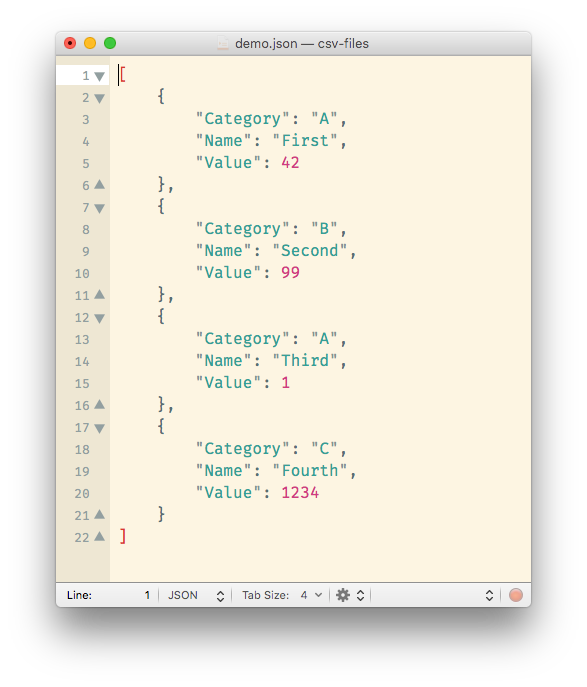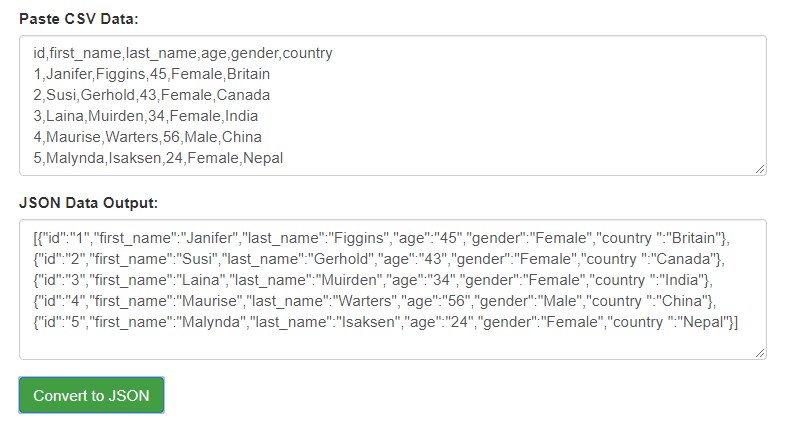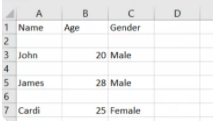
What if you wanted to send back attributes for each person in each family? You would then have to design a complex parser that knows which parts of the CSV are referring to elements of a family, and which parts are referring to elements of each person.
#Json compare csv update
Otherwise, an outage is required to update both programs individually to prevent incompatibility issues.įinally, CSV does not really support data hierarchies. Furthermore, since the program creating the CSV and the program parsing the CSV reside on different machines (remember that we are passing data from one machine to another) then both programs must be updated simultaneously to prevent the receiving program to crash. As a result, if the data structure changes, there is an associated overhead of having to change or even redesign your parsers. This is because a homemade parser is required to convert the CSV data into a native data structure. This is the major advantage of CSV because it can help reduce bandwidthĬons – This format is the least versatile of all three formats. Generally speaking, CSV formats are about half the size of XML and JSON formats. Pros – This format is the most compact of all three formats. Let’s say that your response is sending back a list of people in a particular family. As the name implies, this data format is basically a list of elements separated by commas. The purpose of this post is to define each data format, lay out the pros and cons for each, and discover which situations work best with each format.ĬSV stands for “comma separated values”. In order to develop an application with a solid architecture, it’s a good idea to understand the differences between each format and know when to use them. As of today, there are three major data formats being used to transmit data from a web server to a client: CSV, XML, and JSON.

Old file position allows you to position the old file at the left or right view (top/bottom in vertical split). The first is to determine whether you’re comparing the old or new file.

Menu Settings: The options listed here let you customize the file positions.You can choose a different color, change the highlight color, and its transparency. Color Settings: This option allows you to set color for Added, Deleted, Moved, and Changed lines.Navigate to Compare > Settings and explore the settings you can tweak.

The compare plugin has all the basic features of a standard Diff tool. It even lists down the keyboard shortcuts for those commands. When you click the Compare menu, it shows a popup with all the commands and options.


 0 kommentar(er)
0 kommentar(er)
